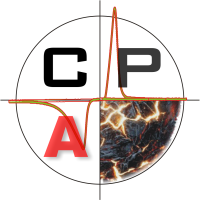
Journal of
Corrosion and Anticorrosion Protection


 Volume II, Issue 1, 2007
Volume II, Issue 1, 2007
 Home
Home------------------------------
 About
Us
About
Us ------------------------------
 Authors Guide
Authors Guide------------------------------
 Subscription
Subscription-----------------------------
 News
News-----------------------------
 Contact
Us
Contact
UsContent



Lucia STAICU, George VERMEŞAN  , Gabriela
STAICU
, Gabriela
STAICU
Corrosion of dental alloys - cause of biological adverse effects
Abstract: The main purpose of this work is to present the results obtained till now of in vitro and in vivo researches concerning relationship between corrosion of dental alloys and local and systemic adverse effects caused by these materials on the patients which accuse symptoms of some allergies, inflammatory processes or poisoning after immersion some metallic prosthetics.



A. PĂTRU  , I.
BIBICU, M. PREDA, B. TUTUNARU, M. FLOROIU
, I.
BIBICU, M. PREDA, B. TUTUNARU, M. FLOROIU
The behavior of carbon steel in industrial waters containing ammonia/
ammonium nitrate
Abstract: The corrosion of carbon steel in NH3 / NH4NO3 solutions was studied by means of galvanostatic polarisation and Mossbauer spectrometry. Electrochemical measurements show that in diluted ammoniacal media the carbon steel is relatively passive and the corrosion current density had values between 0.37 - 2.03 mA/dm2. This is confirmed by Mossbauer spectroscopy measurements indicating that, in the given practical condition, a superficial layer was formed on the metallic surface, providing a corrosion protection and passivity; the corrosion product is a mixture of Fe3+ compounds with no magnetic or crystalline ordering.



Radu BOICIUC  , Adriana
PREDA, Simona BOICIUC
, Adriana
PREDA, Simona BOICIUC
Effect of nickel microalloying the thermal galvanizing baths
over the deposits corrosion resistance
Abstract: The work deals with the issue of nickel microalloying of the thermal galvanizing bath, in order to improve the corrosion resistance of gladded layers. Its effects over the corrosion resistance were studied. The description of both cladded layer and zinc bath micro alloyed by nickel was accomplished by microscopy and optical spectrometry, X ray diffraction, emphasizing the nature of structural constituents and the changes that appeared in relation with nickel concentration. Lab experiments included tests of acceleration corrosion in saline fog. Experimental results emphasized a close interdependence between nickel concentration, microstructure and corrosion susceptibility of cladded layers. This allowed the setting of the nickel optimal concentration required by thermal galvanizing bath microalloying, with maximum effect over the corrosion resistance of cladded layers.



Stela CONSTANTINESCU 
Experimental researches on chemical vapor deposition coatings
Abstract: The CVD procedure for coating of sintered carbides plates implies locating the pieces to be coated in the reactor chamber so that the reactive gas mixture can pass among them. The titanium nitride layers are formed by passing the mixture of titanium tetrachloride, argon and hydrogen over the plates at high temperature.
The titanium nitride (TiN) is deposited as layer of fine granulation on all the sides exposed.
Gheorghe MIHĂILĂ 
The kinetics and the mechanism of formation zinc layers at
hot dip galvanisation of high content silicon
Abstract: With the growth of demand for high-strength steels, silicon-killed, the problem of reactive steels hot dip galvanization, came back in actuality. The unpredictability of high reaction rates and the less coherent nature of the coating formed, can lead to a detrimental effect on the coating quality. The increase in reactivity results in high zinc consumption as the coatings are thicker. The thick coatings are often brittle and have a dark, lusterless appearance if the alloy layer has grown through to the coating surface. Should the steel surface silicon content, the outward galvanized appearance can be neuniform, with dull areas being evident in an otherwise shiny coating. This section deals with the effect with normal galvanizing baths, trying find an answer of this problem.
Anca COJOCARU  , Gabriela
Elena BADEA, Ioana MAIOR, Teodora
BADEA
, Gabriela
Elena BADEA, Ioana MAIOR, Teodora
BADEA
18Cr10Ni stainless steel corrosion in artificial seawater
Abstract: The corrosion behavior of 18Cr10Ni stainless steel in artificial seawater was investigated by following methods: cyclic voltametry, potentiostatic polarization, time dependence of the corrosion potential, mass variation of the corrosion exposed samples and electrochemical impedance spectroscopy. The experimental data show that 18Cr10Ni stainless steel spontaneous passivates in artificial seawater, the passive film formation and its consolidation being facilitated by the extension of the immersion time. However, it can be affected by pitting corrosion if the corrosion potential exceeds certain values.
Mariana PRODANA, Daniela IONIŢĂ, Ioana DEMETRESCU 
Ti7Al3V2Mo2Fe
alloy characterization and its potential as a dental alloy
Abstract: This paper is focused on the stability evaluation of a new Romanian alloy Ti7Al3V2Mo2Fe treated and untreated, in order to improve corrosion resistance. The procedure is a chemical treatment - alkali treatment - and as a result, a surface coated with bioactive hydroxyapatite film was obtained. The potential application of this alloy as a dental one, based on a convenient alloying composition with molybdenum (Mo) as a beta stabilizer, element of titanium (Ti) and aluminum as an alpha stabilize, was tested in two kind of artificial saliva: Tani Zuchi and Fusayama (the one with calcium content). The corrosion tests were evaluation of open circuit potential in time according to ASTM G 3190 standard and cyclic polarization tests performed corresponding to the standard ASTM G 61-86 method. The results are explained in connection with morphology changes observed in infrared determinations and the induced bioactivity was discussed.
All data were statistically treated with Medcalc program devoted to biomedical applications.
 Year
Year
|2010||2009|
|2008|
|2007|
|2006|
The Journal of Corrosion and Anticorrosion Protection is edited by S.C. BETAK S.A.
in collaboration with Technical University of Cluj-Napoca, Romania